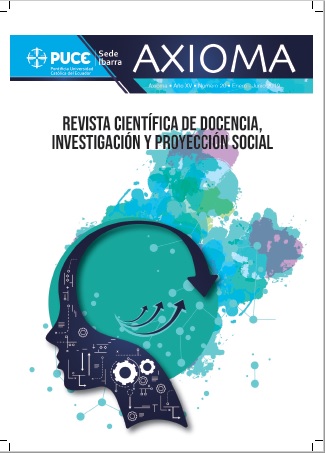High school ecuadorian graduates’ interest in studying new university majors in open and distance modalities
Main Article Content
Abstract
The objective of this study was to identify the Ecuadorian students’ interest in taking new academic offers in Open and Distance Modalities at “Técnica Particular de Loja” University (UTPL). This was a quantitative study, not experimental-descriptive, ex post-facto. An online questionnaire was administered, which was completed by 650 students of different high schools around the country. The results show that, currently, Ecuadorian high school graduates have a greater preference for studying traditional majors, in traditional classrooms, to new majors in distance education. Based on the results of this study, it is concluded that, in Ecuador, there is still a need to promote among high school graduates new academic offers which can meet the current global demand, as well as, new and modern learning methodologies through Open and Distance Education that, in an alternative way, allows them to have access to quality education.
Downloads
Article Details
Con la finalidad de contar con un tipo de licencia más abierta en el espectro que ofrece Creative Commons, a partir de diciembre de 2022 desde el número 27, AXIOMA asume la Licencia Creative Commons 4.0 de Reconocimiento-NoComercial-CompartirIgual 4.0(CC BY-NC-SA 4.0). Tanto el sitio web como los artículos en sus diferentes formatos, reflejan esta información.
![]()
Hasta el mes de noviembre de 2022 con el número 26, la revista AXIOMA asumió una Licencia Creative Commons Atribución-NoComercial-SinDerivadas 4.0 Internacional (CC BY-NC-ND 4.0). Los artículos contenidos en cada número hasta el 26, cuentan con esta licencia y su descripción se conserva en el portal de nuestra revista.
Atribución-NoComercial-SinDerivadas
CC BY-NC-ND
AXIOMA- Revista Científica de Investigación, Docencia y Proyección Social
References
Büyükbaykal, C. I. (2015). Communication Technologies and Education in the Information Age. Procedia - Social and Behavioral Sciences, 174, 636–640. https://doi.org/10.1016/J.SBSPRO.2015.01.594
Caliskan, S., Suzek, S., y Ozcan, D. (2017). Determining student satisfaction in distance education courses. Procedia Computer Science, 120, 529–538. https://doi.org/10.1016/J.PROCS.2017.11.275
Çelen, F. K., Çelik, A., y SeferoÄŸlu, S. S. (2013). Analysis of Teachers’Approaches to Distance Education. Procedia - Social and Behavioral Sciences, 83, 388–392. https://doi.org/10.1016/J.SBSPRO.2013.06.076
Consejo Nacional de Planificación. (2017). Plan Nacional de Desarrollo 2017-2021. Quito. Retrieved from http://www.planificacion.gob.ec/wp-content/uploads/downloads/2017/10/PNBV-26-OCT-FINAL_0K.compressed1.pdf
DePoy, E., Gitlin, L. N., DePoy, E., y Gitlin, L. N. (2016). Experimental-Type Designs. Introduction to Research, 134–157. https://doi.org/10.1016/B978-0-323-26171-5.00010-0
Fischman, G. E., y Ott, M. (2018). Access, equity and quality trends in Latin America’s public universities. International Journal of Educational Development, 58, 86–94. https://doi.org/10.1016/J.IJEDUDEV.2016.11.002
Groenwald, S. L. (2018). The challenges and opportunities in leading a multi-campus university. Journal of Professional Nursing, 34(2), 134–141. https://doi.org/10.1016/J.PROFNURS.2017.12.005
Hammershøj, L. G. (2018). The perfect storm scenario for the university: Diagnosing converging tendencies in higher education. Futures. https://doi.org/10.1016/J.FUTURES.2018.06.001
Kaya, M. (2012). Distance education systems used in universities of Turkey and Northern Cyprus. Procedia - Social and Behavioral Sciences, 31, 676–680. https://doi.org/10.1016/J.SBSPRO.2011.12.123
Koohang, A. (2009). A learner-centred model for blended learning design. International Journal of Innovation and Learning, 6(1), 76. https://doi.org/10.1504/IJIL.2009.021685
Kutluk, F. A., y Gulmez, M. (2012). A Research about Distance Education Students’ Satisfaction with Education Quality at an Accounting Program. Procedia - Social and Behavioral Sciences, 46, 2733–2737. https://doi.org/10.1016/J.SBSPRO.2012.05.556
Matt, P.-A. (2017). Uses and computation of imprecise probabilities from statistical data and expert arguments. International Journal of Approximate Reasoning, 81, 63–86. https://doi.org/10.1016/J.IJAR.2016.11.003
Medvedeva, T. A. (2015). University Education: The Challenges of 21st Century. Procedia - Social and Behavioral Sciences, 166, 422–426. https://doi.org/10.1016/J.SBSPRO.2014.12.547
Milman, N. B. (2015). Distance Education. International Encyclopedia of the Social y Behavioral Sciences, 567–570. https://doi.org/10.1016/B978-0-08-097086-8.92001-4
Ministerio de Educación. (2018). AMIE (Estadísticas educativas a partir de 2009-2010). Retrieved May 10, 2019, from https://educacion.gob.ec/amie/
Moreno, O., y Cárdenas, M. G. (2012). Educación a distancia: nueva modalidad, nuevos alumnos. Perfiles de alumnos de Psicología en México. Perfiles Educativos, 34(136), 118–136. Retrieved from http://www.scielo.org.mx/scielo.php?script=sci_arttextypid=S0185-26982012000200008
Nguyen, D. (2018). The university in a world of digital technologies: Tensions and challenges. Australasian Marketing Journal (AMJ), 26(2), 79–82. https://doi.org/10.1016/J.AUSMJ.2018.05.012
Samigulina, G., y Samigulina, Z. (2016). Intelligent System of Distance Education of Engineers, Based on Modern Innovative Technologies. Procedia - Social and Behavioral Sciences, 228, 229–236. https://doi.org/10.1016/J.SBSPRO.2016.07.034
Semradova, I., y Hubackova, S. (2016). Teacher Responsibility in Distance Education. Procedia - Social and Behavioral Sciences, 217, 544–550. https://doi.org/10.1016/J.SBSPRO.2016.02.042
Silva-Smith, A. L., Traylor, C., Ostovich, D., George, J., y Smith, N. (2016). Regulation of Distance Nursing Education Programs: One University’s Experience. Journal of Nursing Regulation, 7(2), 34–38. https://doi.org/10.1016/S2155-8256(16)31076-6
Sukrawan, Y., Soemarto, y Komaro, M. (2018). Blended learning development for vocational education. IOP Conference Series: Materials Science and Engineering, 434, 012262. https://doi.org/10.1088/1757-899X/434/1/012262

